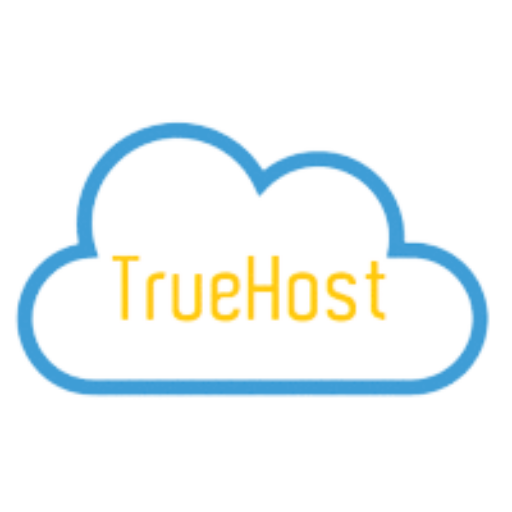Opening a thrift store can be a fun and rewarding business venture. As with any new business, there are costs involved in getting a thrift store up and running.
The startup costs for a thrift store will depend on factors like the size and location of the store, inventory, staffing, and more. With careful planning and budgeting, many entrepreneurs have been able to successfully launch thrift stores on modest budgets.
This article will outline the key costs involved so you can estimate how much it takes to open a thrift store.
The most significant expenses when starting a thrift store are the startup costs, location, inventory, and ongoing operating expenses. Understanding these main cost categories will help you develop a business plan and budget.
We’ll look at average amounts for each expense area so you can get an idea of the total investment required. Let’s dive in and explore how much it really costs to open a thrift store!
Key Takeaways
- Expect around $25,000 – $100,000 in startup costs like licensing, lease, renovations, inventory.
- Location rent will likely be $1,000 – $30,000 per month depending on size and area.
- Inventory costs include purchasing merchandise and processing donations. Budget $10,000 – $30,000 upfront.
- Ongoing operating expenses like payroll and supplies will range $5,000 – $8,000 monthly.
- Carefully estimate all costs during the planning stage to ensure adequate startup funding.
- With lean operations and effective merchandising, thrift stores can achieve sustainable profitability.
Estimating Startup Costs
The startup costs are the initial one-time investments needed to get your thrift store up and running. This includes registering and licensing the business, lease deposits, renovations, furniture and equipment, and initial inventory purchases.
Some of the main startup costs to factor in include:
- Business registration fees – Registering your business name and structure will cost $50-$500 depending on your location.
- Business licenses and permits – Applying for a sales tax ID, business license, and any required permits can cost $200-$500.
- Lease deposit – Most commercial leases require 1-3 months rent as a refundable security deposit, which could be $2,000-$10,000.
- Renovations – Even moving into an existing retail space will require some renovations for flooring, lighting, displays, etc. Budget $5,000-$20,000.
- Furniture and fixtures – Used furniture, clothing racks, checkout counters, and point-of-sale systems will run about $5,000-$15,000.
- Initial inventory – You’ll need a starting inventory to open your doors. Plan on investing $10,000-$30,000 on popular donated items.
- Staff hiring and training – If hiring staff upfront, account for 1-2 weeks of wages for training.
- Marketing and advertising – Initial promotions and signage for your grand opening can cost $1,000-$5,000.
- Utilities deposits – Most providers require deposits for new service accounts, around $500-$2,000 total.
- Insurance – Shop for quotes on business liability and property insurance, likely $1,000-$5,000 annually.
- Contingency fund – Set aside an extra 10-20% for unexpected costs.
All in, you should budget $25,000-$100,000 to cover your startup costs depending on the size and scope of your thrift store.
Taking the time to thoroughly estimate these one-time expenses will help you secure funding and launch successfully.
Read also: How to register a business name in Nigeria online
Location Costs
One of the biggest ongoing costs for a thrift store will be rent or mortgage payments for your retail location. The amount you’ll pay wildly varies based on factors like:
- Geographic area – Urban and suburban locations have higher rents than rural areas.
- Size – The square footage of your space drives cost. Plan for at least 1,500 sq ft up to 10,000+ sq ft.
- Condition – Turnkey spaces cost more than those needing renovations.
- Lease terms – Longer leases of 5+ years may offer lower rates.
- CAM fees – Maintenance, insurance and tax fees often add 30%+ to rent.
To give you a sense of potential location costs, here are some average monthly rents according to commercial real estate data:
- Small town location (2,000 sq ft) – $1,000 – $2,500
- Suburban location (3,000 sq ft) – $2,500 – $7,000
- Urban location (5,000 sq ft) – $5,000 – $15,000
- Major city (10,000 sq ft) – $10,000 – $30,000
For comparison, buying a property instead of leasing may cost $200,000 – $750,000 depending on size and location.
Be sure to tour spaces, get quotes from brokers, negotiate terms, and forecast ongoing rent and fees in your thrift store budget.
Having the right location is worth paying a premium for.
Finally, factor in any costs to renovate the space to meet your merchandising and floor plan needs.
As discussed in the previous section, plan on investing $5,000 – $20,000 in lighting, flooring, displays, dressing rooms, and signage. The location should showcase your brand and make shopping an enjoyable experience.
Inventory Costs
Acquiring inventory to resell is central to any thrift store’s business model and success. Your main costs will involve:
- Purchasing merchandise – Whether from donors, wholesalers, or other channels.
- Processing donations – Sorting, cleaning, tagging and preparing items to sell.
- Storage – Racks, shelves, bins and supplies to organize inventory.
For purchasing inventory, thrift stores have a few options:
- Solicit donations from the community – Free acquisitions but inconsistent volume and quality.
- Buy from wholesalers – Reliable source but reduces profit margins. Expect to pay 25-50% of resale value.
- Purchase at auctions/estate sales – Opportunity for deals but labor intensive. Budget $500-$5,000 for an auction visit.
- Trade with other stores – Barter and trade surplus items for new inventory.
Plan on investing $10,000 – $30,000 upfront on popular inventory like clothes, shoes, books, toys, decor, electronics, furniture, etc. Vintage, designer and trendy items turn over quickest. Keep at least 2-4 weeks of inventory on hand.
Ongoing costs for preparing and processing donations can add up as well. From intake and sorting to steaming, repairs, tagging and pricing, budget adequate staffing, supplies and equipment. For example:
- Donation center supplies – Hangers, bags, bins, furniture dolly, cleaning products.
- Textile care – Steamer, sewing machine, detergent, spot cleaner.
- Pricing – Tagging gun, stickers, tags.
With good inventory management and turnover, the merchandise itself can fund its replacement and ideally generate a profit. But factor in sufficient capital and resources to secure quality, sellable inventory.
Operating Costs
The ongoing monthly expenses to run your thrift store will add up quickly. Be sure to accurately estimate these operating costs as part of your business plan. Major operating expenses include:
- Rent – As outlined earlier, plan on a minimum of $1,000-$2,000/month for smaller locations.
- Payroll – Employee wages, taxes, and benefits for staff. Budget $2,500+/month per full-time employee.
- Insurance – Property, liability, worker’s comp, etc. $150-$500/month.
- Utilities – Electric, gas, water, phone/internet. $500-$1,500/month.
- Accounting and legal fees – Bookkeeping, payroll admin, legal counsel retainer. $500-$2,000/month.
- Advertising – Ongoing promotion like social media, SEM, print ads, etc. $500-$2,000/month.
- Supplies – Office, packing, cleaning materials and other consumables. $500-$1,500/month.
- Maintenance and repairs – Keeping equipment and facilities well-maintained. $250-$1,000/month.
- Credit card processing – Transaction fees average 2-4% of sales.
- Trash and recycling pickup – $100-$300/month.
A good rule of thumb is to estimate your total operating expenses at 50-80% of your projected sales.
An average thrift store with $10,000 in monthly sales could expect $5,000-$8,000 in ongoing overhead costs.
Build out a profit and loss forecast estimating both income and expenses.
This will help determine the sales volume and margins you need to break even and ultimately achieve profitability.
Adapt your operating budget as needed each month.
Additional Expenses to Consider
Beyond the major cost categories already outlined, here are some other potential expenses to factor into your thrift store budget:
- Opening promotions – Grand opening ads and events to attract customers. $2,000-$5,000.
- Ecommerce costs – If selling online, expenses for inventory software, shipping supplies, marketplace fees. $200-$1,000/month.
- Security system – Cameras, alarms, theft deterrent devices. $100-$300/month.
- Credit card readers – Terminals, POS systems, payment processors. $200-$2,000 upfront.
- Customer loyalty program – Punch cards, mobile app, rewards incentives. $100-$500 startup.
- Bagging supplies – Branded bags, tissue, stickers. $100-$300/month.
- Cleaning service – If outsourcing deep cleaning of store. $300-$1,500/month.
- Parking lot maintenance – Snow removal, lighting, repairs, etc. if responsible for lot.
- Store audit and loss prevention – Preventing shoplifting and theft. $250+/month.
- Bookkeeping fees – If outsourcing payroll, accounting, tax prep. $300-$1,000/month.
- Consulting services – Business mentor, marketing help. $100-$250/hour.
- Storage fees – Offsite storage for excess inventory and equipment. $50-$500/month.
- Transportation – Vehicle costs for picking up donations. Lease, gas, repairs, insurance.
- Dump fees – For unusable donated items. $50-$500/month.
Having a miscellaneous budget for one-off operating costs and unforeseen expenses is wise.
Continue evaluating ways to control expenses and boost profitability. With diligent financial management, your thrift store can thrive!
Conclusion
Launching a thrift store requires thorough planning and budgeting to cover the many startup and ongoing costs.
While the specific expenses will vary for each business based on your vision and area, you can expect to invest $100,000 – $250,000 in total expenses during your first year of operating.
The keys to controlling costs are finding an affordable location, buying inventory at wholesale rates, leveraging donated merchandise, and operating efficiently.
Partner with an experienced business advisor to forecast expenses, secure funding, and establish lean processes.
With adequate startup capital and a loyal customer base, your thrift store can be a rewarding entrepreneurial endeavor. The thriving secondhand market and focus on sustainability makes now an ideal time to open a thrift store.
If you approach this business venture with passion, a pragmatic budget, and some sweat equity, you can build a profitable store that benefits the community.
Read also:


